Code
HCS33308
Weight
1.5 Kg / 3.31 lbs
Size
Height
21cm (8") Width
17cm (7") Depth
13cm (5") Material
Copper
Availability
Available

Safe Payment
We accept Paypal, Money Transfer, Bank Transfer
Confidence
Protection covers your purchase and personal data.
Worldwide Delivery
We ship Worldwide, except Russia.Shipping cost US$25.2 for upto 0.5 kgs

Hotline
Talk to help line for your question on 9841267335Double-color Oxidized
The [dorje Legpa], Handmade Buddhist Statue, Silver Plated Oxidized boasts a mesmerizing double-color oxidation finish, featuring a combination of darker and lighter shades of oxidation. This unique technique adds depth and complexity to the statue's appearance, creating a captivating visual effect. Through a meticulous oxidation process, certain areas of the [dorje Legpa], Handmade Buddhist Statue, Silver Plated Oxidized are intentionally oxidized to achieve a darker shade, while other areas are oxidized to a lighter tone. This deliberate contrast between the two shades creates a dynamic interplay of colors, enhancing the contours and details of the statue. Read More . . .
The [dorje Legpa], Handmade Buddhist Statue, Silver Plated Oxidized boasts a mesmerizing double-color oxidation finish, featuring a combination of darker and lighter shades of oxidation. This unique technique adds depth and complexity to the statue's appearance, creating a captivating visual effect. Through a meticulous oxidation process, certain areas of the [dorje Legpa], Handmade Buddhist Statue, Silver Plated Oxidized are intentionally oxidized to achieve a darker shade, while other areas are oxidized to a lighter tone. This deliberate contrast between the two shades creates a dynamic interplay of colors, enhancing the contours and details of the statue. Read More . . .
Partly Gold plating.
This [dorje Legpa], Handmade Buddhist Statue, Silver Plated Oxidized has a Partly gold-plated finish. Partly fire gold gilding, a common practice in Nepali handicrafts. This technique is skillfully employed by artisans to create intricate designs on various metal objects, including statues, jewelry, and decorative items. Through a process, a mask or resist is applied to safeguard specific areas from the gold plating. The object is then subjected to high temperatures, allowing the gold to beautifully adhere to exposed surfaces using a combination of heat and pressure.
In the realm of Buddhist statues, this technique holds additional significance as it distinguishes the golden-plated body from the oxidized or maroon-painted clothing. This visual separation conveys the contrast between the divine purity of the body and the modest attire symbolizing the humble lifestyle of Buddhist monks. The partly fire gold gilding not only adds exquisite detail and elegance but also embodies the deep cultural and spiritual meaning associated with these treasured artifacts. Read More . . .
This [dorje Legpa], Handmade Buddhist Statue, Silver Plated Oxidized has a Partly gold-plated finish. Partly fire gold gilding, a common practice in Nepali handicrafts. This technique is skillfully employed by artisans to create intricate designs on various metal objects, including statues, jewelry, and decorative items. Through a process, a mask or resist is applied to safeguard specific areas from the gold plating. The object is then subjected to high temperatures, allowing the gold to beautifully adhere to exposed surfaces using a combination of heat and pressure.
In the realm of Buddhist statues, this technique holds additional significance as it distinguishes the golden-plated body from the oxidized or maroon-painted clothing. This visual separation conveys the contrast between the divine purity of the body and the modest attire symbolizing the humble lifestyle of Buddhist monks. The partly fire gold gilding not only adds exquisite detail and elegance but also embodies the deep cultural and spiritual meaning associated with these treasured artifacts. Read More . . .
Lost-Wax System
This Dorje Legpa of [dorje Legpa], Handmade Buddhist Statue, Silver Plated Oxidized is made by the process of the Lost Wax system. This is a very complicated, time consuming and historic process of making metal sculptures.Which is why it is sometimes called Precision Casting as well. Hence the sculptures made by this process are comparatively expensive. There are many new, advanced and less time consuming methods of casting metal sculptures available as well. But due to the benefits provided by the traditional lost wax system in quality control and customization, we prefer the Loss wax system over Ceramic molding, or sand casting to make our Dorje Legpa.
Below we have tried to illustrate the process of making a loss wax system statue: Read More . . .
This Dorje Legpa of [dorje Legpa], Handmade Buddhist Statue, Silver Plated Oxidized is made by the process of the Lost Wax system. This is a very complicated, time consuming and historic process of making metal sculptures.Which is why it is sometimes called Precision Casting as well. Hence the sculptures made by this process are comparatively expensive. There are many new, advanced and less time consuming methods of casting metal sculptures available as well. But due to the benefits provided by the traditional lost wax system in quality control and customization, we prefer the Loss wax system over Ceramic molding, or sand casting to make our Dorje Legpa.
Below we have tried to illustrate the process of making a loss wax system statue: Read More . . .
About Dorje Legpa :
Damchan Dorje Legpa means 'oath-bound Benign Thunderbolt'. His feet are naked and he wears his hair in a yogi's topknot wrapped around a nine-prong vajra. He wears the blue gown of the tantrika and he is the colour of Dorje Trollo, the form of Padmakara who subdued him to the service of Dharma.
This form where Dorje legpa is seen riding a snow lion is a 'majestic yogi form who rides the vast tracks of sky beyond the mountain peaks. The snow lion represents youthful energy , a type of power which is enlivened by humour. The humour of the snow lion is the non dual humour which transcends seriousness and non-seriousness. There is a wide awake, wide open, wide-eyed quality to the youthful 'emotional astuteness' of the snow lion. The snow lion carries Dorje Legpa on her back in a graceful yet precise manner, not needing to be 'swift to the kil with regard to tracking down our deviousness with regard to our vows. The snow lion mount, simply allows Dorje Legpa the space of vajra humour in which all deviations are hoist on their respected petards. Neuroses simply run from the gaze of the Dorje Legpa and his snow lion until they exhaust themselves. This is their field of power.
History of Dorje Lagpa :This form where Dorje legpa is seen riding a snow lion is a 'majestic yogi form who rides the vast tracks of sky beyond the mountain peaks. The snow lion represents youthful energy , a type of power which is enlivened by humour. The humour of the snow lion is the non dual humour which transcends seriousness and non-seriousness. There is a wide awake, wide open, wide-eyed quality to the youthful 'emotional astuteness' of the snow lion. The snow lion carries Dorje Legpa on her back in a graceful yet precise manner, not needing to be 'swift to the kil with regard to tracking down our deviousness with regard to our vows. The snow lion mount, simply allows Dorje Legpa the space of vajra humour in which all deviations are hoist on their respected petards. Neuroses simply run from the gaze of the Dorje Legpa and his snow lion until they exhaust themselves. This is their field of power.
Like other important Nyingma protectors, there is a wealth of treasure literature on Dorje Lekpa's (Skt. Vajra Sadhu) origins and characteristics, much of it contradictory. However, the following essay will attempt to collate the various myths of Dorje Lekpa, based on the terma sources quoted in the 1734 "Biographies of the Ocean of Oath-Bound Protectors," written by Lelung Zhepe Dorje (1697-1740). According to Lelung's sources, Dorje Lekpa is an emanation of Padma Heruka, the king of the tsen spirits, and ruler over heaven and earth in the western direction. In one telling of his immediately preceding life, Dorje Lekpa was a lay follower of the Buddha Dipankara, named Shritala. However, Shritala fell from the path of righteousness when he stole a neighbor's goat. He took the goat to a charnel ground where he killed and ate it, and dressed himself in its skin. Living in the charnel grounds, Shritala began to murder men and have licentious sex with many different women there. One day, however, he happened to eat the poisoned flesh of a deer, and died.
Myth of Dorje Lagpa :According to another telling of the origin myth, in his previous life Dorje Lekpa was Putapa, son of brahmin parents. He became a monk at twelve, and is said to have completed his monastic training in just three years. Then, at age eighteen, he is said to have completely abandoned his home and gone to dwell in ascetic retreat in the charnel ground Cool Grove in a hut made of kusha grass. Gradually a rumor spread about Putapa that he was engaging in improper practices, and he became known as Siddha of Evil Mantras. The local king heard these rumors and feared the practice of evil mantras would undermine his rule, so he sent his ministers to kill Putapa. The minister went to Cool Grove and questioned the ascetic, but Putapa denied practicing evil mantras and swore he dwelt in wholesome discipline only. Nevertheless, the ministers burned him alive inside his grass hut. Before he died, Putapa swore to be reborn as the son of a yaksha demon, to have immense power in the world, to be able to cast down lightning and hail, and to have power over the life-breath of all living beings.
Right after this, to the northwest of Mount Meru, a mu demon who was the embodiment of hatred, and a female mara who was the embodiment of lust, had sex. Seven months later on the first day of the last winter month of a tiger year, the mother produced an iron placental sack which fell at the base of a poison tree. When the mu father picked it up and looked inside, he saw a single child made out of iron, who immediately flew up to Mount Meru and reduced the four continents of our world system to ash. He bound the gods and demons who lived on Meru under his power. The lords of the mu, za, naga, and tsen demons all offered him their life essence. With these four as his retinue, the iron child began harming all living beings. Angered that they could not control him, the parents prayed that he would be enslaved by an "even greater power....from the realm of space." And so he apparently was, though no specific subjugating deity is mentioned in this account.
In another version of the myth of Dorje Lekpa's birth, Shri Heruka, in the form of a rakshasa, and Krodhishvari, in the form of a rakshasi, produced five daughters. The eldest of these mated with the king of the maras, and from their union was born Dorje Lekpa on the seventeenth day of the twelfth month. His mother urged him to eat the hearts of tigers, goats, and cats, and to protect the teachings of Shri Heruka. Because the boy had a birthmark in the shape of a vajra at his heart, he was determined to be part of the Vajra Buddha Family, and consequently received empowerment by Vajrapani. It is said that he was enthroned as the great yaksha that has power over our world system until the teachings of 5,000 buddhas disappear.
In yet another version of the myth, the "Ten Chapter Tantra of Dorje Lekpa Garwa Nagpo," the deity's parents were a cat-headed rakshasa and a monkey-headed female mara. They lived in a cube-shaped stone castle in a city of yamas in India. It was surrounded by swirling dust storms, whirling sword-blades, blazing fire, lightening, thunder, and hail. The rakshasa and mara lived there, eating the flesh and blood of sentient beings and having sex. From their union came five children. The main one was born with the head of a wolf and he had four siblings that had the teeth of tigers, lions, and jackals, claws like vulture talons, and the horns of scorpions. They were black demons of the charnel ground that attacked the life-force of all living things.
One day, the wolf-headed demon killed a goat that belonged to the sage Tramena. Tramena went to the Buddha and told him that there was a terrible hungry ghost that was preying on the beings of the three worlds, and needed to be subdued, which he promptly was by Vajrapani. Another source asserts that Dorje Lekpa manifested as an iron hawk to kill beings in the sky, an iron wolf to kill those on earth, and a solitary iron man who caused much injury and violence. This being angered Hayagriva who promptly split his head into pieces, before resurrecting and empowering him as the lord of the gods and demons who arise from the eight classes of consciousness.
Also, according to the "Ten Chapter Tantra," Dorje Lekpa took on different deity forms in each of the different realms of rebirth. He was born first as "All-Joyful" the king of the wealth gods. Then he was born as an asura lord of death who had a rat's head, took cat hearts as offerings, and made weapons, called Garwa Nagpo, or "Black Ironsmith." He was also born as the son of the King of Lanka, and named "Tiger Tamer," who took tiger hearts as offerings. Born as animal, he was called "Blue Iron Wolf," a wolf who killed flocks of goats to eat. As this deity he received goat hearts as offerings. As a hungry ghost, he was a tsen who lived in a maroon-colored castle in a rocky crag.
Right after this, to the northwest of Mount Meru, a mu demon who was the embodiment of hatred, and a female mara who was the embodiment of lust, had sex. Seven months later on the first day of the last winter month of a tiger year, the mother produced an iron placental sack which fell at the base of a poison tree. When the mu father picked it up and looked inside, he saw a single child made out of iron, who immediately flew up to Mount Meru and reduced the four continents of our world system to ash. He bound the gods and demons who lived on Meru under his power. The lords of the mu, za, naga, and tsen demons all offered him their life essence. With these four as his retinue, the iron child began harming all living beings. Angered that they could not control him, the parents prayed that he would be enslaved by an "even greater power....from the realm of space." And so he apparently was, though no specific subjugating deity is mentioned in this account.
In another version of the myth of Dorje Lekpa's birth, Shri Heruka, in the form of a rakshasa, and Krodhishvari, in the form of a rakshasi, produced five daughters. The eldest of these mated with the king of the maras, and from their union was born Dorje Lekpa on the seventeenth day of the twelfth month. His mother urged him to eat the hearts of tigers, goats, and cats, and to protect the teachings of Shri Heruka. Because the boy had a birthmark in the shape of a vajra at his heart, he was determined to be part of the Vajra Buddha Family, and consequently received empowerment by Vajrapani. It is said that he was enthroned as the great yaksha that has power over our world system until the teachings of 5,000 buddhas disappear.
In yet another version of the myth, the "Ten Chapter Tantra of Dorje Lekpa Garwa Nagpo," the deity's parents were a cat-headed rakshasa and a monkey-headed female mara. They lived in a cube-shaped stone castle in a city of yamas in India. It was surrounded by swirling dust storms, whirling sword-blades, blazing fire, lightening, thunder, and hail. The rakshasa and mara lived there, eating the flesh and blood of sentient beings and having sex. From their union came five children. The main one was born with the head of a wolf and he had four siblings that had the teeth of tigers, lions, and jackals, claws like vulture talons, and the horns of scorpions. They were black demons of the charnel ground that attacked the life-force of all living things.
One day, the wolf-headed demon killed a goat that belonged to the sage Tramena. Tramena went to the Buddha and told him that there was a terrible hungry ghost that was preying on the beings of the three worlds, and needed to be subdued, which he promptly was by Vajrapani. Another source asserts that Dorje Lekpa manifested as an iron hawk to kill beings in the sky, an iron wolf to kill those on earth, and a solitary iron man who caused much injury and violence. This being angered Hayagriva who promptly split his head into pieces, before resurrecting and empowering him as the lord of the gods and demons who arise from the eight classes of consciousness.
Also, according to the "Ten Chapter Tantra," Dorje Lekpa took on different deity forms in each of the different realms of rebirth. He was born first as "All-Joyful" the king of the wealth gods. Then he was born as an asura lord of death who had a rat's head, took cat hearts as offerings, and made weapons, called Garwa Nagpo, or "Black Ironsmith." He was also born as the son of the King of Lanka, and named "Tiger Tamer," who took tiger hearts as offerings. Born as animal, he was called "Blue Iron Wolf," a wolf who killed flocks of goats to eat. As this deity he received goat hearts as offerings. As a hungry ghost, he was a tsen who lived in a maroon-colored castle in a rocky crag.


![[dorje Legpa], Handmade Buddhist Statue, Silver Plated Oxidized](https://handicraftseller.com/uploads/pics/product/thumb/2024/07/33308.jpg)
![[dorje Legpa], Handmade Buddhist Statue, Silver Plated Oxidized](https://handicraftseller.com/uploads/pics/product/thumb/2024/07/33308_0.jpg)
![[dorje Legpa], Handmade Buddhist Statue, Silver Plated Oxidized](https://handicraftseller.com/uploads/pics/product/thumb/2024/07/33308_1.jpg)
![[dorje Legpa], Handmade Buddhist Statue, Silver Plated Oxidized](https://handicraftseller.com/uploads/pics/product/thumb/2024/07/33308_2.jpg)
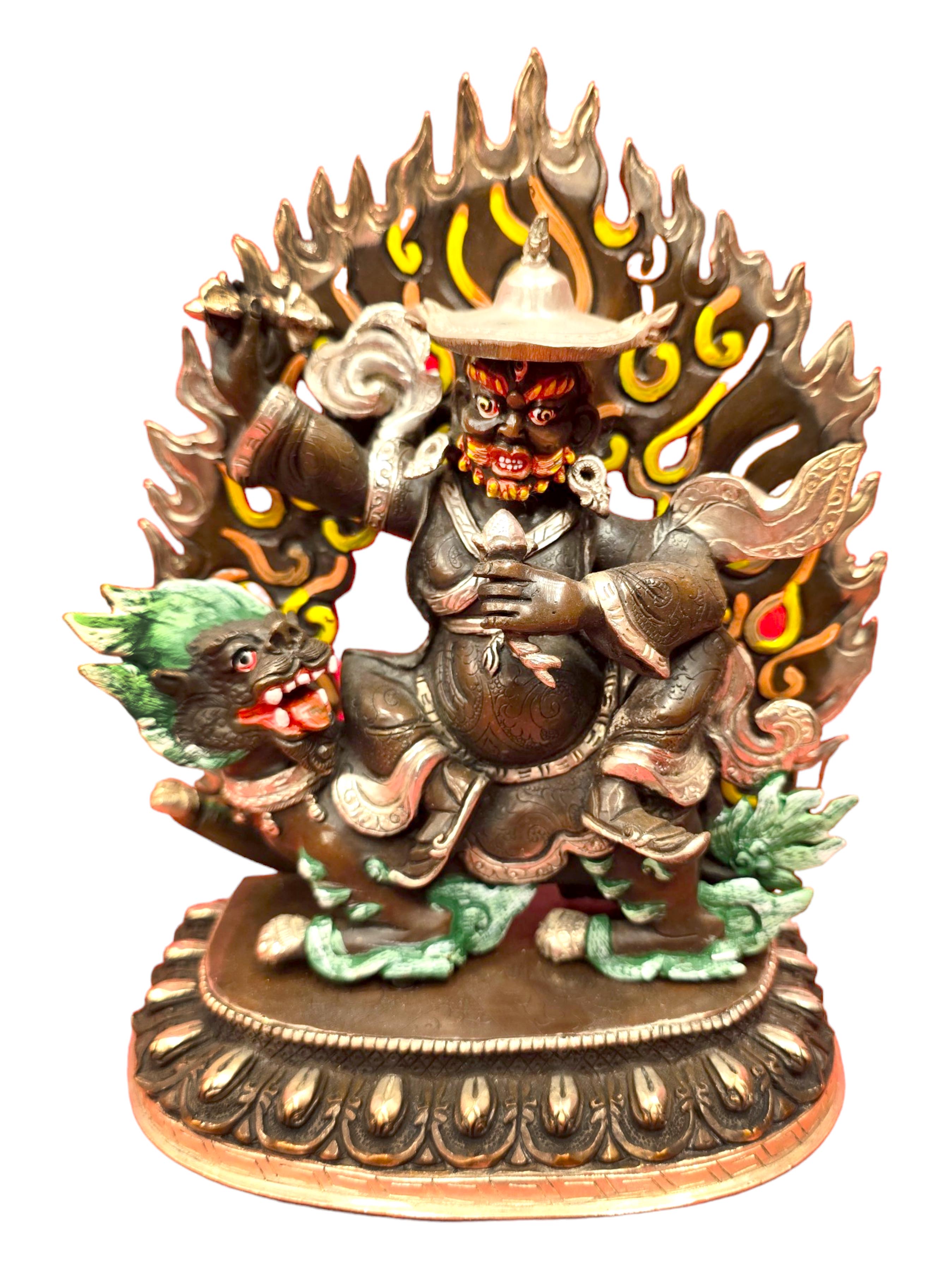

























































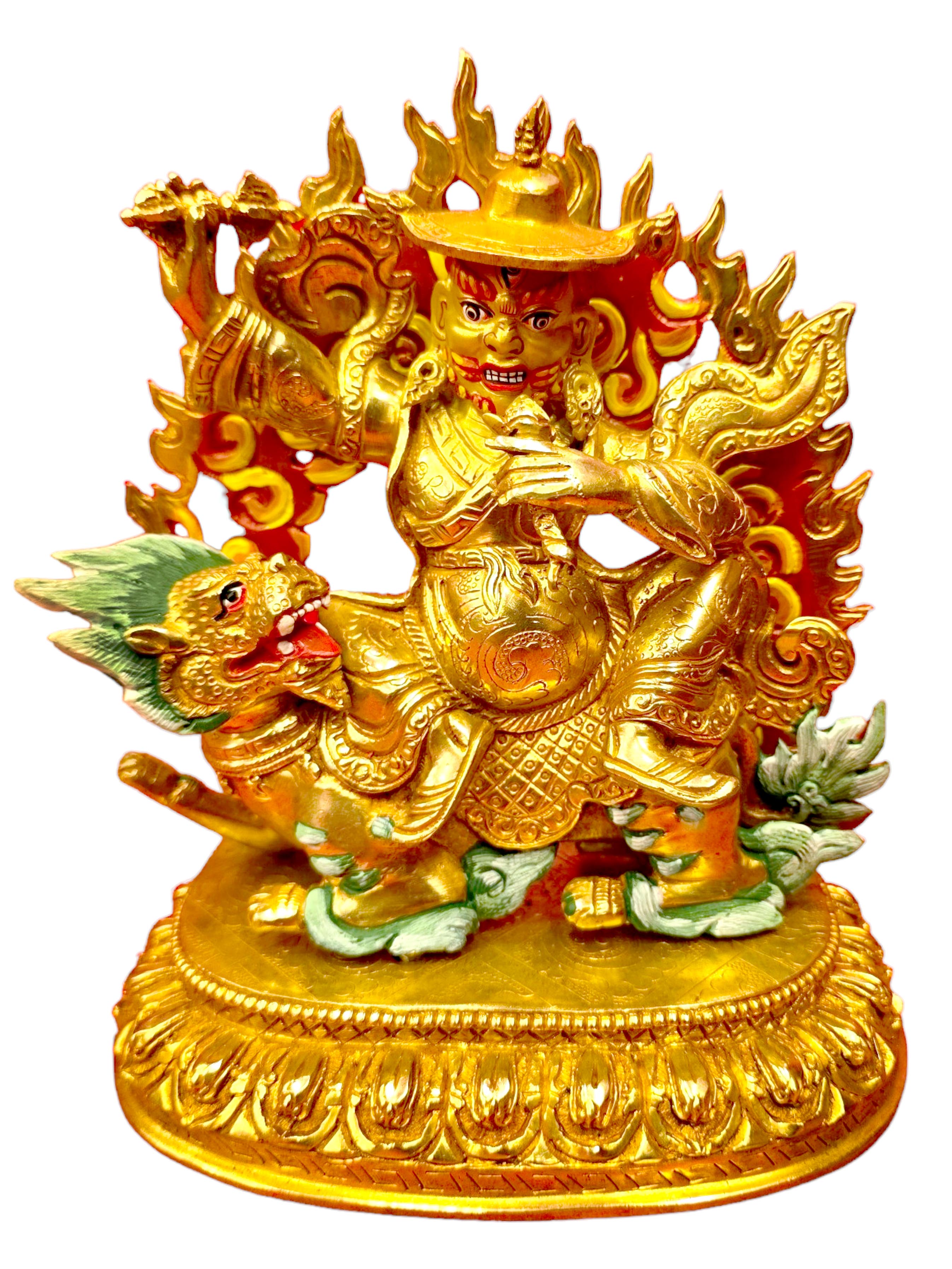 Dorje Legpa, Handmade Buddhist Statue, Full Gold Plated Painted Face" title="
Dorje Legpa, Handmade Buddhist Statue, Full Gold Plated Painted Face" title="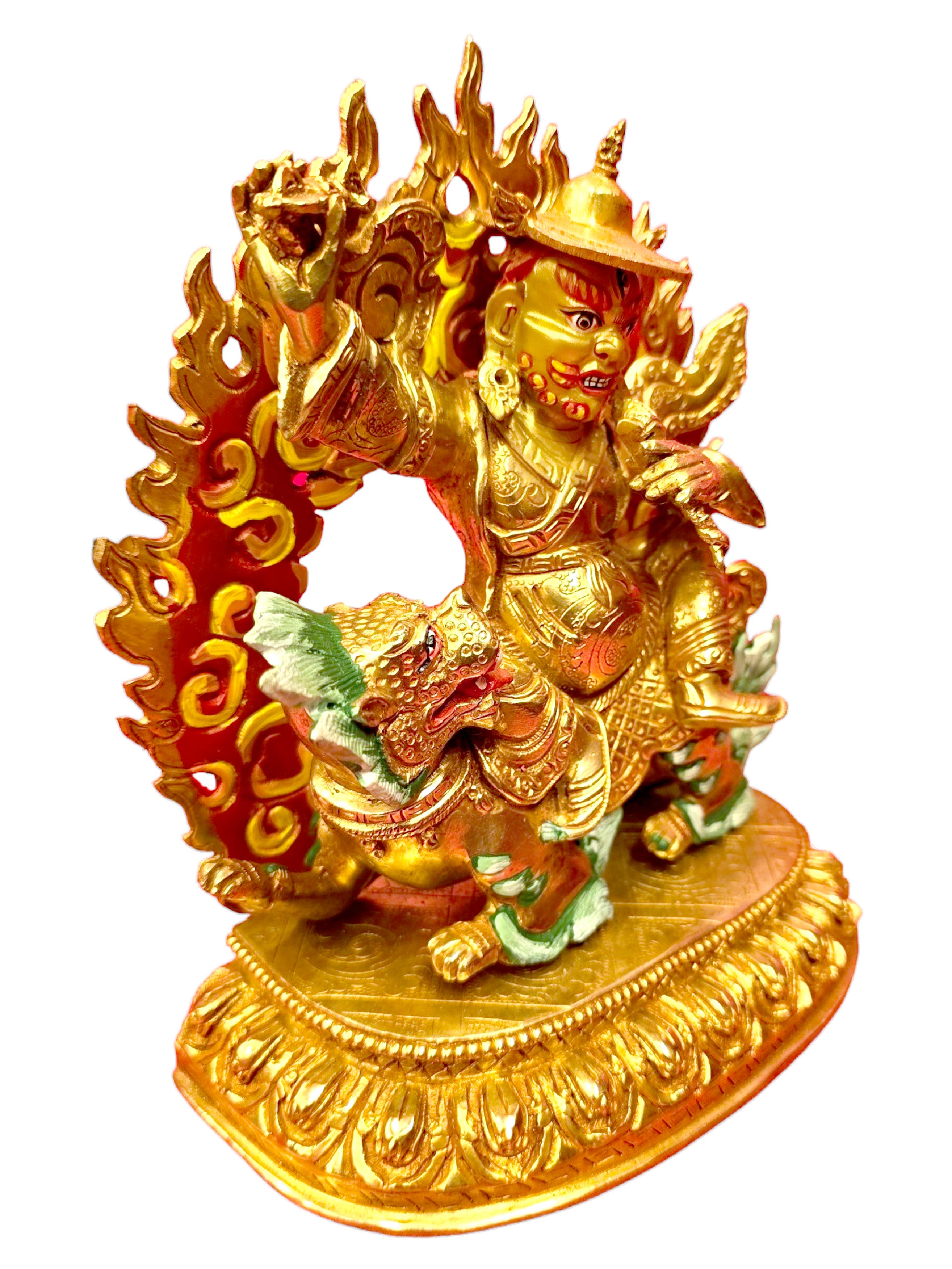 Dorje Legpa, Handmade Buddhist Statue, Full Gold Plated Painted Face" title="
Dorje Legpa, Handmade Buddhist Statue, Full Gold Plated Painted Face" title="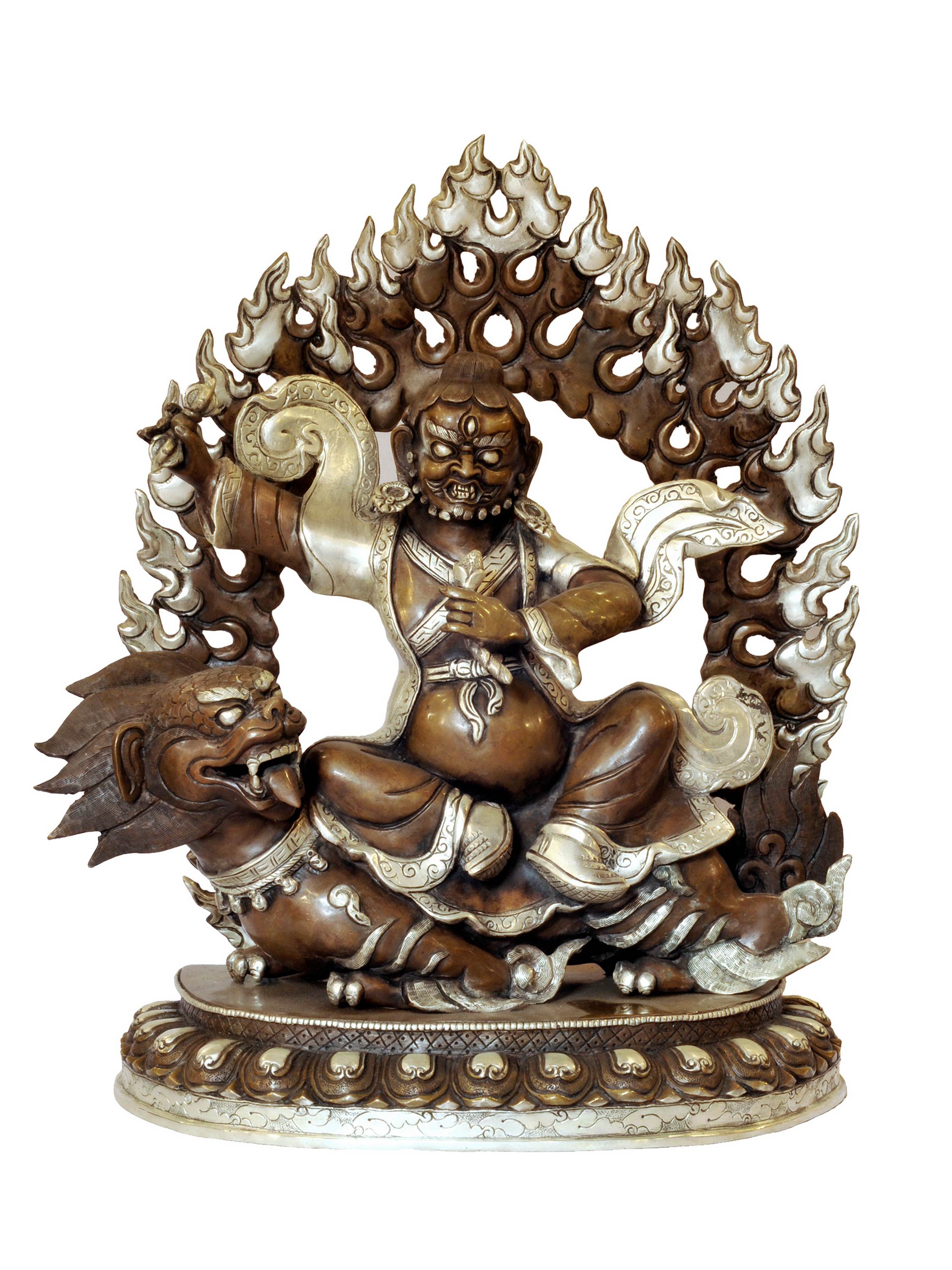 of Dorje Legpa,
of Dorje Legpa, 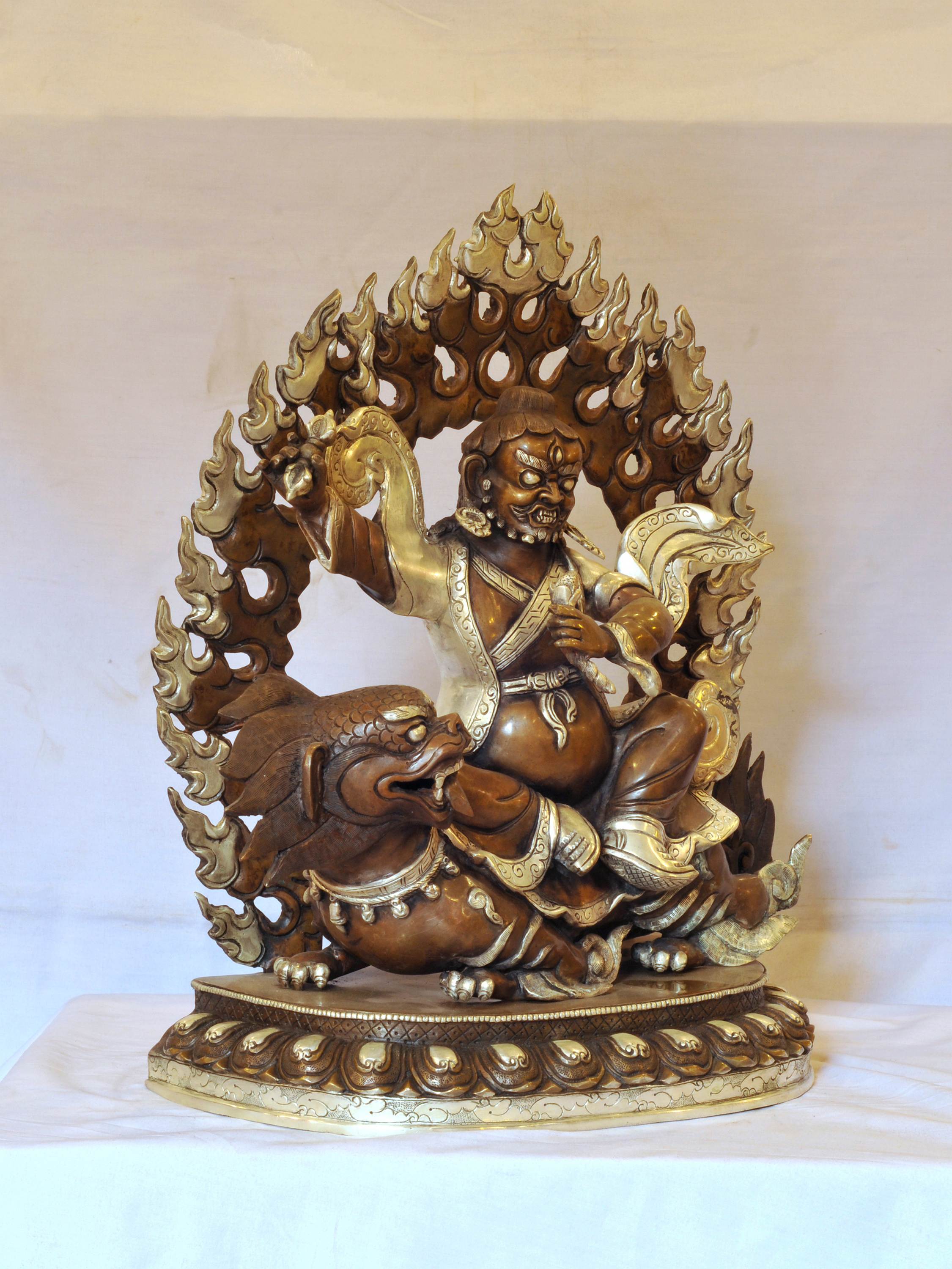 of Dorje Legpa,
of Dorje Legpa,  of Dorje Drolo,
of Dorje Drolo, 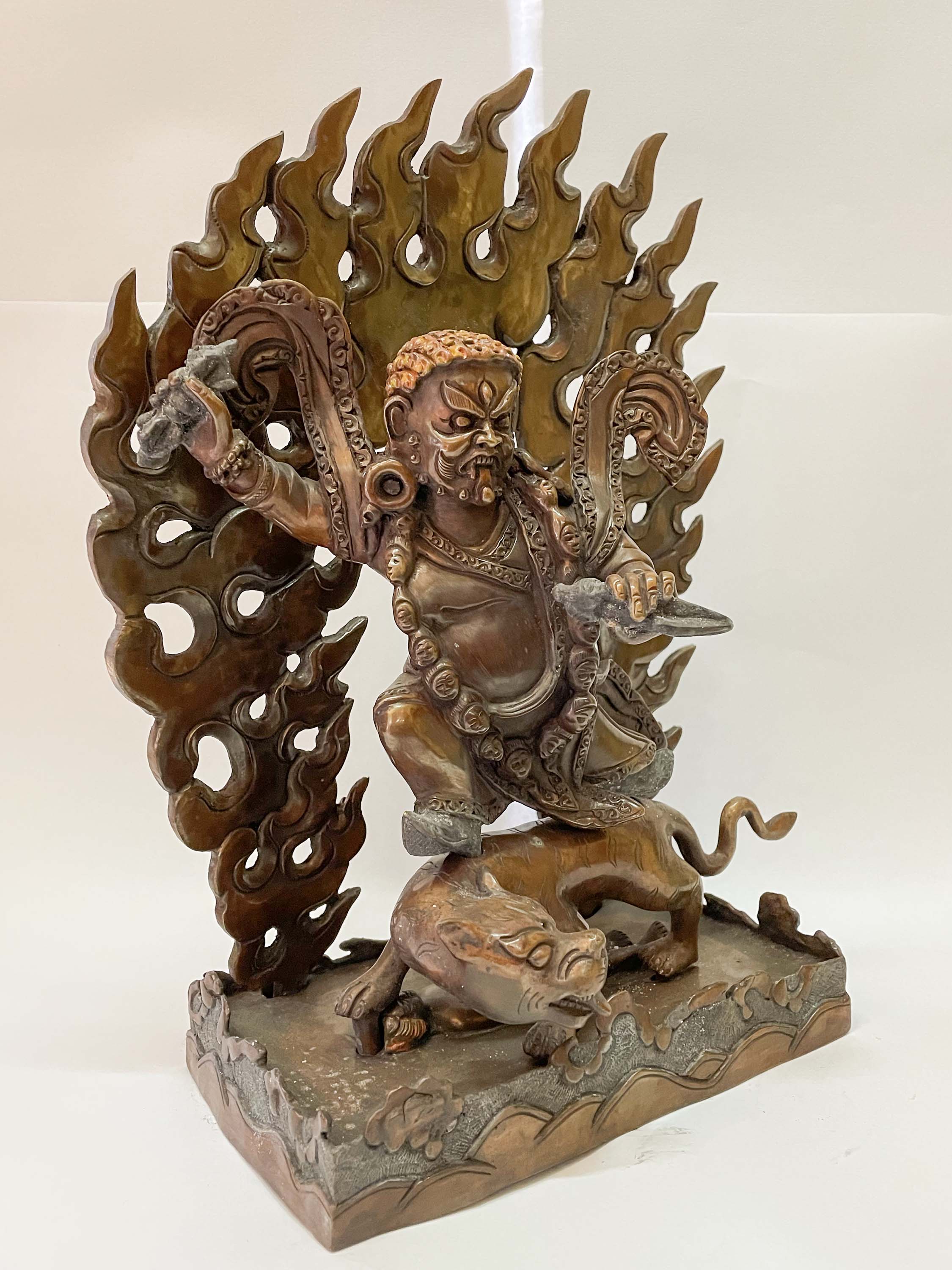 of Dorje Drolo,
of Dorje Drolo, 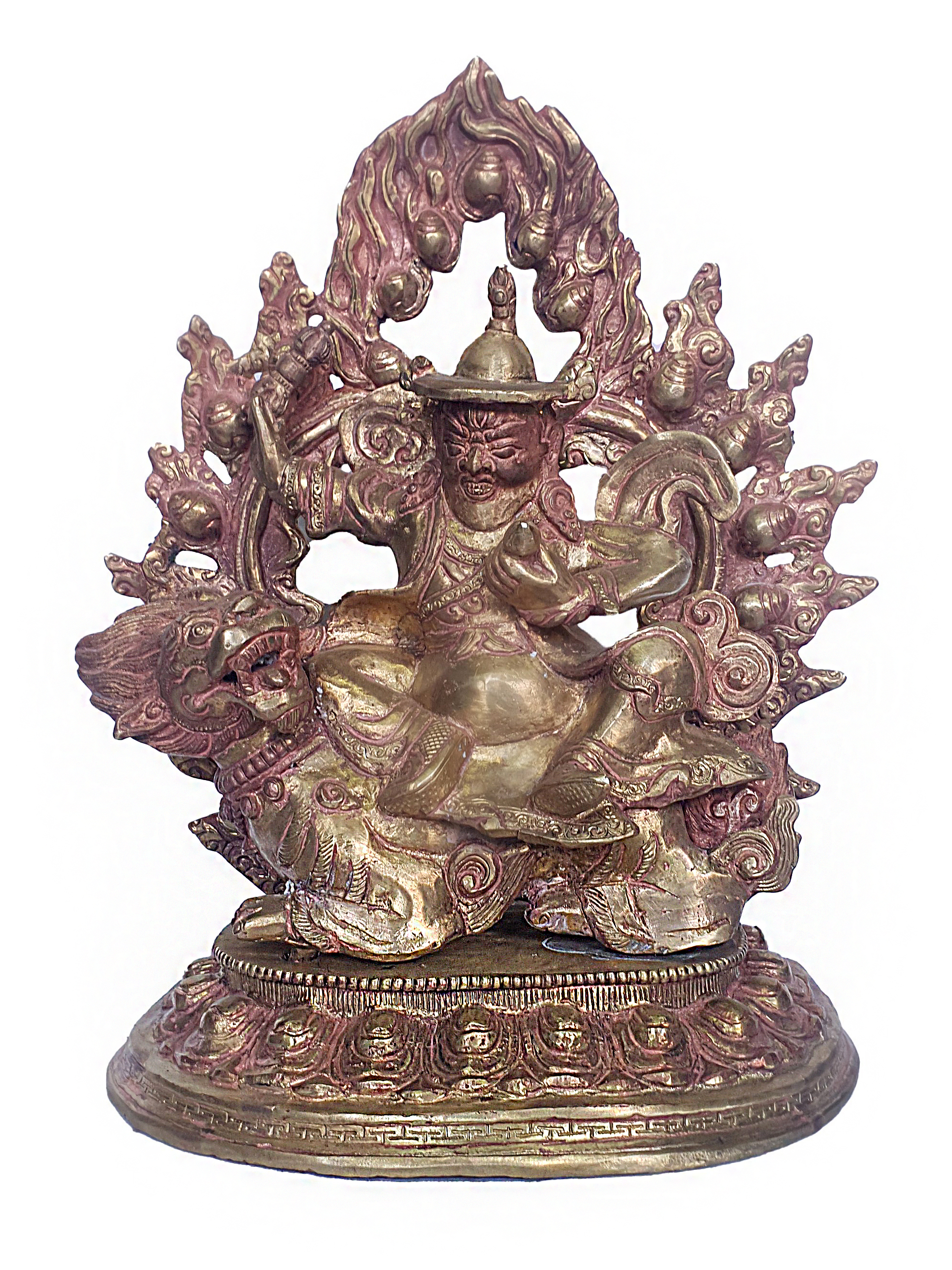 of Dorje Legpa,
of Dorje Legpa, 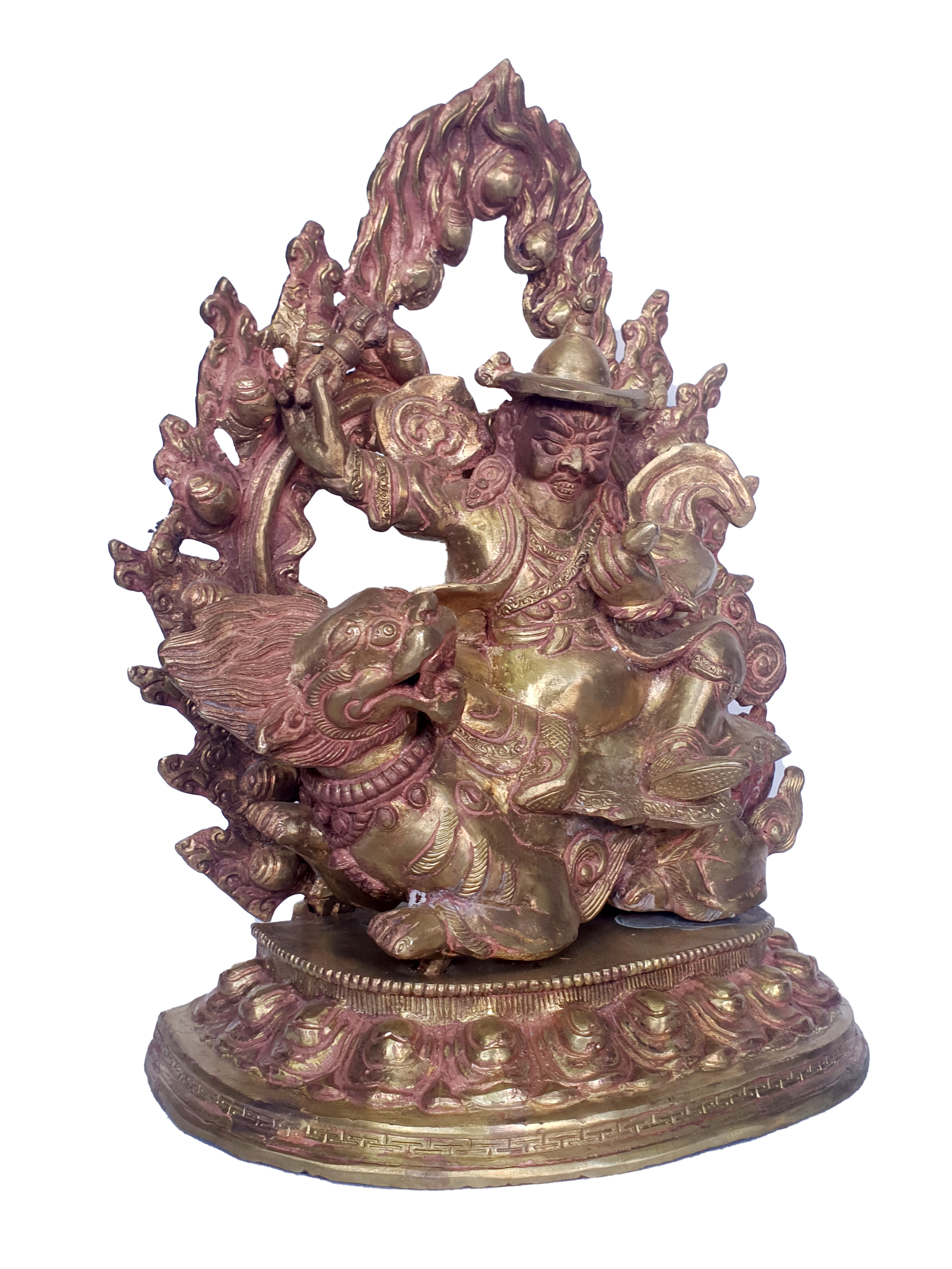 of Dorje Legpa,
of Dorje Legpa,  of Dorje Legpa,
of Dorje Legpa, 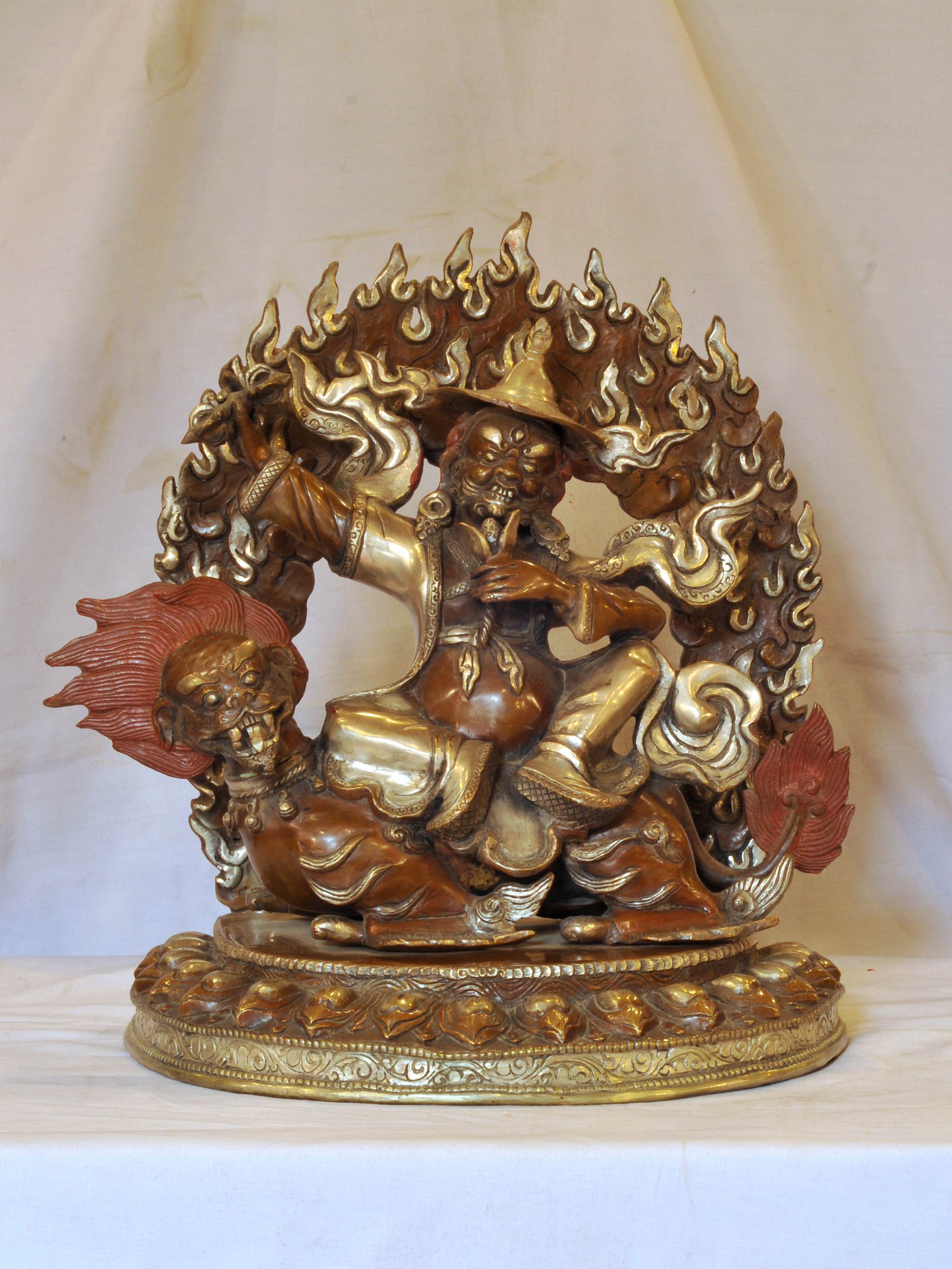 of Dorje Legpa,
of Dorje Legpa,